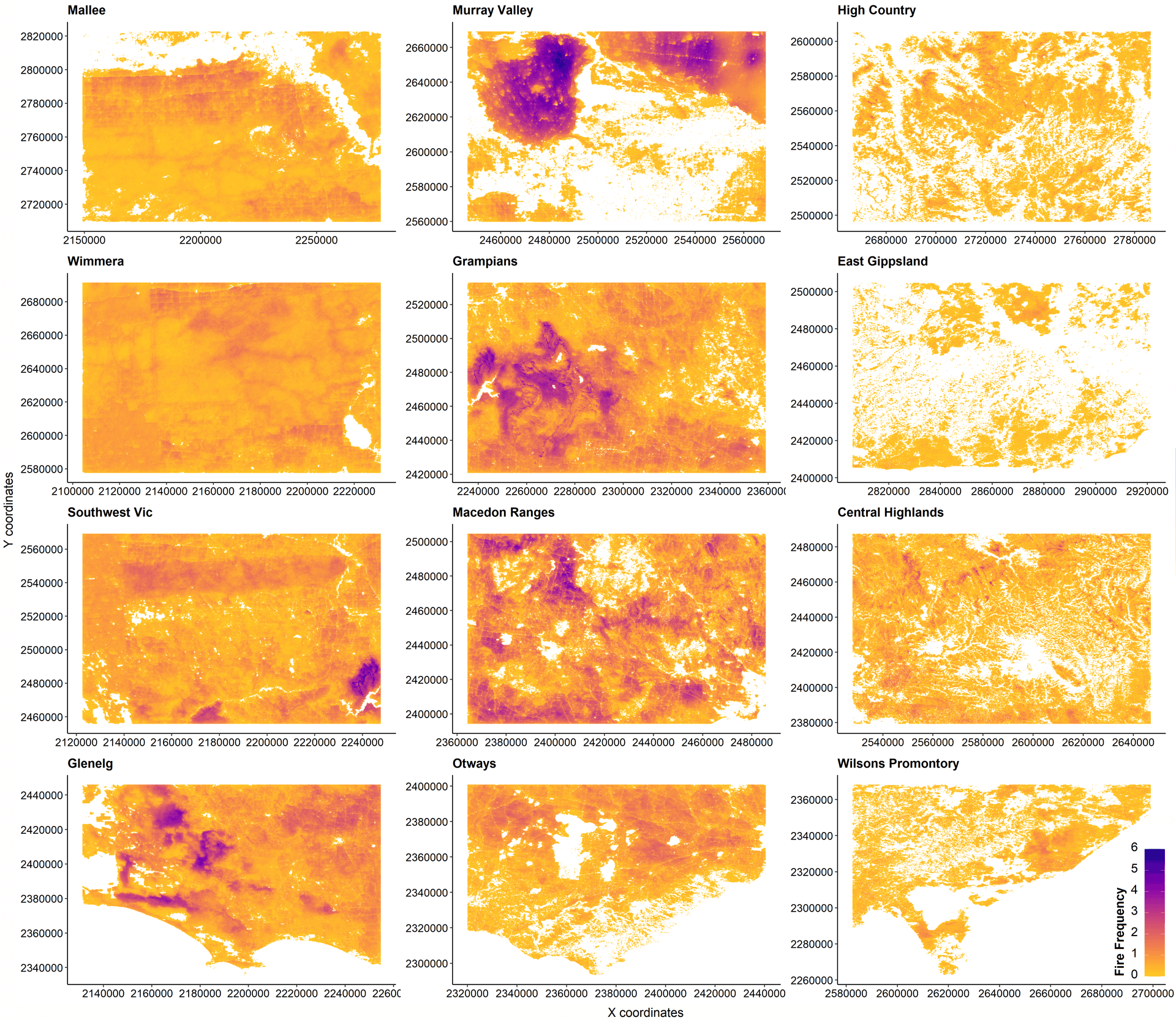Understanding how fire regimes are shifting with climate change and therefore how bushfire risks are changing is a key knowledge gap for many management jurisdictions in Australia, including biodiversity management. Preserving species and communities going forward will require strategic prioritisation of conservation actions and an understanding of how shifting fire regimes may increase or decrease bushfire risk across the landscape.
Project aims
The aim of this project was to make state-wide estimates of bushfire risk given future climate conditions. We sought to understand how fire regimes may change under future climates and predict the areas with the greatest likelihood of frequent and high severity fires occurring.
Methods
We used the Fire Regime and Operations Simulation Tool (FROST) developed within FLARE to model fire risk for 12 regions in Victoria across 50 years utilising three management scenarios; no planned burning, current rates of planned burning, increased planned burning. We collaborated with the Department of Environment, Land Water and Planning (DELWP) and their biodiversity teams to help expand their Strategic Management Prospects (SMP) tool. This tool aims to prioritise conservation actions by balancing species ecological needs against the benefits of management. Here we tested the impact of various planned burning approaches on wildfire risk to contribute to the data underpinning this tool. Spatially explicit predictions of future fire regimes allow the SMP developers to link fire risk metrics, expert opinion databases and species distribution models to provide a more accurate prediction of the benefits of conservation actions for biodiversity across Victoria.

Raster maps of each study region across Victoria showing the frequency of complete crown consumption, i.e. extreme severity fires, occurring over 50 years averaged across 100 replicates.
Results
We found that under future climate, the frequency of extreme intensity and severity fires was highest in the central and western regions of Victoria such as the Glenelg, Murray Valley, Grampians and Macedon ranges. Planned burning efforts did not significantly reduce the frequency of wildfires but for some regions it did result in a decline in the overall area impacted by at least one wildfire. We also found that some regions had a statistically significant decline in the area burnt by wildfires under planned burning scenarios while others increased. These results reinforce previous research which shows that planned burning can be effective but must be strategically implemented in key areas specific to the fuel and communities present. Some vegetation types increase in hazard as the time since fire increases making planned burns useful for decreasing fuel hazard and reducing risk. However, some vegetation types have a higher fuel hazard when time since fire is short making it riskier to burn these in planned burns.
This project improved our understanding of how fire risk is likely to change under future climate for multiple regions across Victoria. We show that consideration of fuel accumulation under future climate scenarios is crucial and understanding this fuel accumulation will improve our capacity to manage fire risk through fuel treatments.